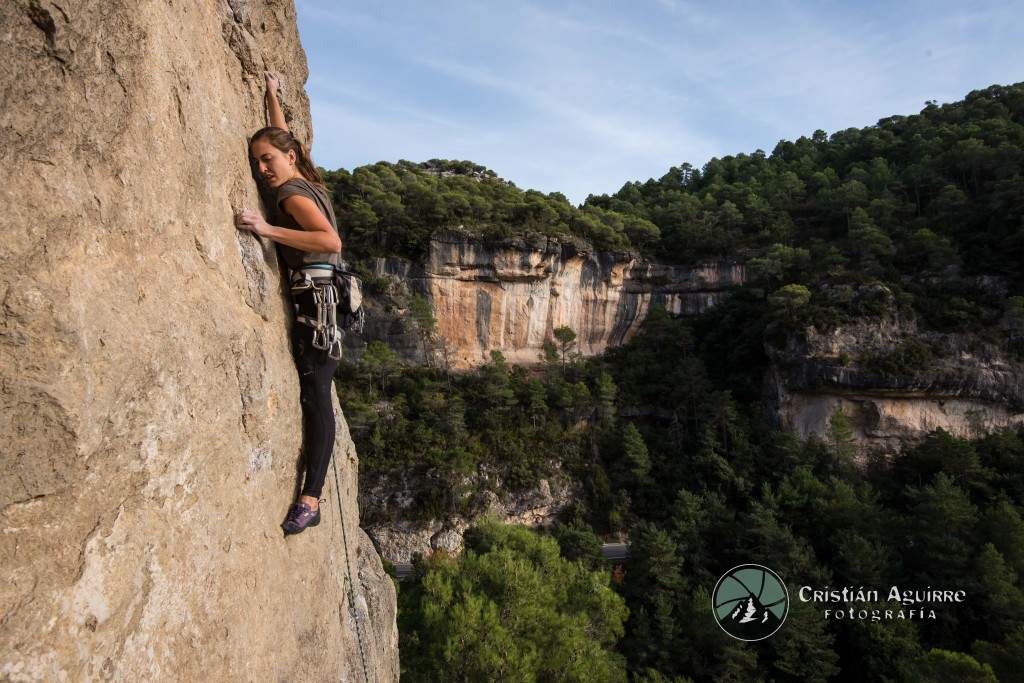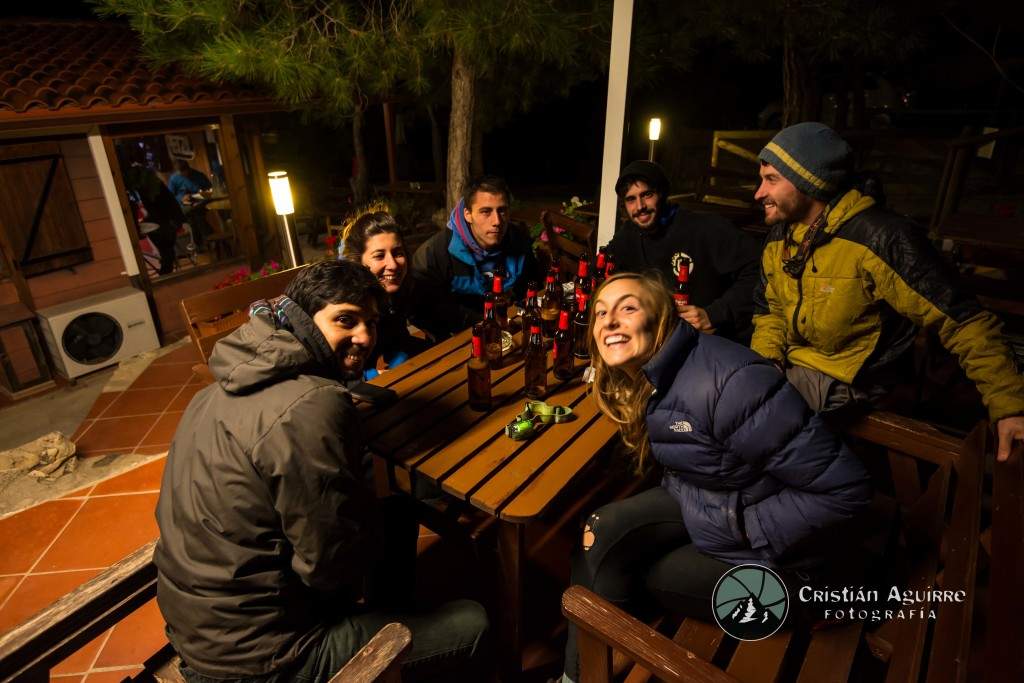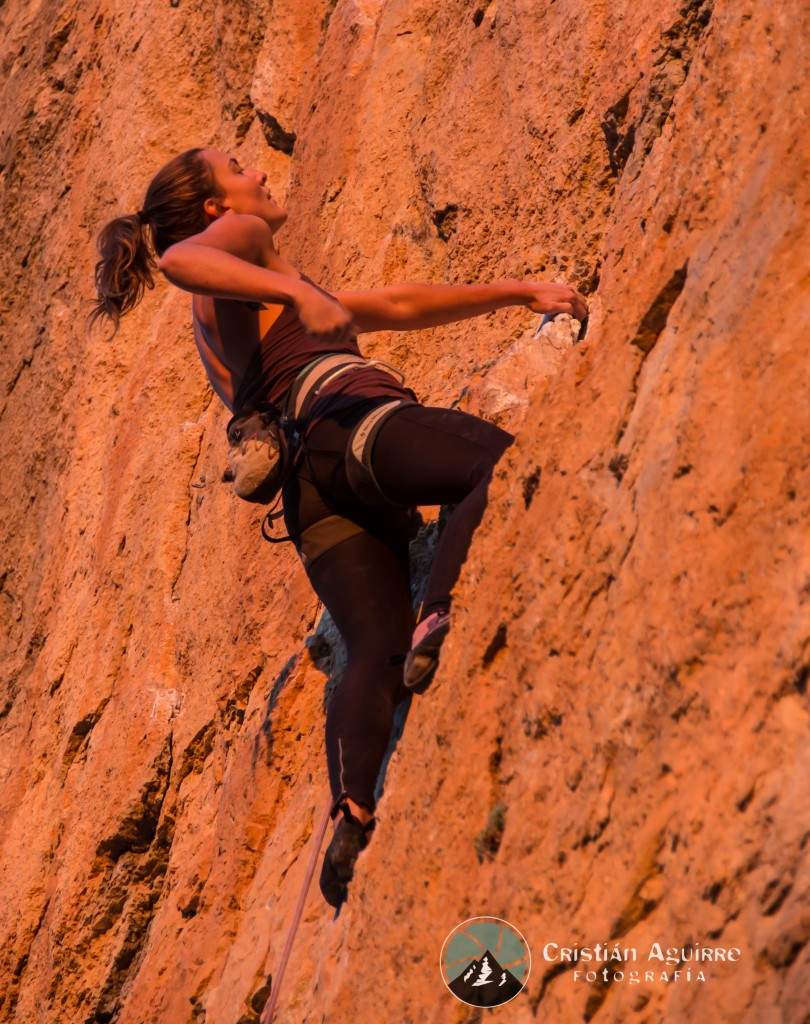Ever wanted to drop everything, find some work in Spain, and live out your climbing dreams? Guest author, Haley Ross, did just that, and today she’s giving us the inside scoop on living and climbing in Catalunya.
Spain, and more specifically Catalunya, has gained world-renowned climbing status with its legendary crags like Siurana, Margalef, Oliana, and Montserrat. In recent years, the climbing community has grown dramatically, with professionals and novices alike moving here to take advantage of the endless opportunities. If you’re lucky, you’ve gotten the chance to explore some of the truly exquisite climbing, but what if you decided to call Catalunya your home? I had barely dabbled in the climbing world before moving to Spain in 2012 to try my hand at teaching English abroad. I imagined staying for a few months, maybe a year, but that all changed the day I started climbing.

Haley climbing in sector Esperó Primavera in Siurana.
I was instantly hooked on the sport for all of the common reasons: physical exercise, being in nature, the sense of community and positive atmosphere. But climbing here seemed to posses something distinguished, one-of-a-kind, with an extremely fanatical, almost (and by ‘almost’ I mean totally) addictive quality. I’ve now been living, teaching, and climbing in Catalunya for the past two years and have no intention of leaving. You’ve probably heard about the “magic” of Catalunya, or even had the chance to visit, but what is it really like to call it home? Why has it become such a climbing “mecca” and what makes it so special?
Pros That I Listed In Catalunya
1. You Can Find A Wide Variety Of Rock Types And Climbing Styles In A Concentrated Area
There’s limestone, conglomerate, sandstone, granite and even deep-water-soloing all within a few kilometers of each other. This is great for the contrast in styles and scenery, but also key when considering the evolution of your strength and technique. The more you are exposed to, the stronger you will get, and not to mention, it’s gorgeous!

Miles of rock, beautiful views, and crag-side jam sessions.
2. It’s Relatively Inexpensive
In all of Spain, rent and food are pretty reasonable, and everyone seems to live more consciously and frugally compared to the US. You see a lot more carpooling and less of a consumerist/capitalist culture. In general, people seem to get by with less. If you know where to look, you can find cheap ways to get to the crags, and there is always a place to pitch a tent or hammock.
3. The People Are Amazing
Everyone is friendly and helpful, always sharing what they have whether it be beta, part of their sandwich, or a motivating “venga!” The climbing community is extremely diverse, with people of all ages from all over the world. You can learn a lot from interacting with them, or even simply observing. Even if you venture solo, you will find a buddy to belay you, a crew to grab beers with after a day of climbing ‘a muerte!’

Post-climbing beers with a great crew.
4. You Can Climb Year-Round
It’s sunny most of the year and when it gets too hot there is deep water soloing, which you can access on the mainland coast, or hop on a cheap flight to world-famous Mallorca! If DWS isn’t your thing, you can find shaded crags on the north faces of most sectors. Winter on the south face is pleasant, and if it’s sunny, you’ll be climbing in a t-shirt. Siurana, Margalef, and Oliana are best in the winter months, while Rodellar is best taken advantage of during the summer. Montserrat is climb-able year round, and on a rainy day, you have an array of world-class climbing gyms to choose from!
Cons Of Climbing In Catalunya
1. The Climbing Scene Is Male-Dominated
By this I don’t mean to say that there aren’t a lot of strong female climbers at all of the crags, just that there are noticeably fewer women than men. This, however, is changing, at a slower pace than in the US, but still, it’s improving! Everyday I see more tías climbing hard, and in a matter of time I envision more of a balanced ratio.

Haley representing strong lady-climbers and bringing up the female to male ratio.
2. The Crags Are Becoming So Popular That A Lot Of The Flora And Fauna Is Being Destroyed
People can be irresponsible and it’s affecting the quality of the rock and the climbing. If this continues, Catalunya will only exist as a memory of great climbing.
3. There Is A Language Barrier
If you don’t speak Spanish (or Catalan), it might be a little tricky to communicate and find your way around, especially in the more isolated villages. Most outsiders don’t realize the importance of the Catalan language before coming to Catalunya. It’s not just a language, but a symbol of freedom and progress for the Catalan people. In the 18th century during Franco’s dictatorship (1939-75), Catalan was banned, and the historic language (dating back to the 9th century) lost recognition, Spanish becoming the only official language.
As Spain transitioned to democracy in the late 1970s, Catalan was again recognized and respected as a national language, and the locals are proud and adamant on speaking it as much as possible. Although locals demand respect for their native tongue, they are always open to speaking to you in Spanish (or English) so that you understand. Since the crags are filled with people from all over Spain, you hear a lot of Spanish, and in multicultural Barcelona, you hear a little bit of everything. People are motivated to practice their English too, and it’s always in good humor.
To help you navigate the language barrier, here’s my list of must-know climbing terms:
- Climb: escalar
- Belay: asegurar
- Rope: cuerda
- Quickdraw: cinta
- Carabiner: mosquetón
- Anchor: reunión
- Chain: cadena
- Harness: arnés
- Bolt: chapa
- Route: via
- Crimp: regleta
- Sloper: romo
- Chalk: magnesio
- Crack: fisura, grieta or diedro
- 2-finger pocket: bidedo
- “Come on!”: Venga!
- “Take”: Pilla
4. You’ll Never Want To Leave
This alone is not really a ‘con,’ but it can be tricky to find consistent work, especially nowadays with the economic crisis that the country is facing. Your options, at least to start, are limited to jobs that require speaking English like teaching, guiding tours, or working at hotels. Finding work is easy within one of these fields, but working papers are hard to come by for US citizens. I’d recommend doing a lot of research and securing a job before deciding to make the move, as the tourist visa expires after just 3 months!

Hiking out after a long day of climbing.
What’s your favorite Spanish climbing location? Share the love in the comments below.
Climb on!
Haley
All photos c/o Cristian Aguirre Fotografia






